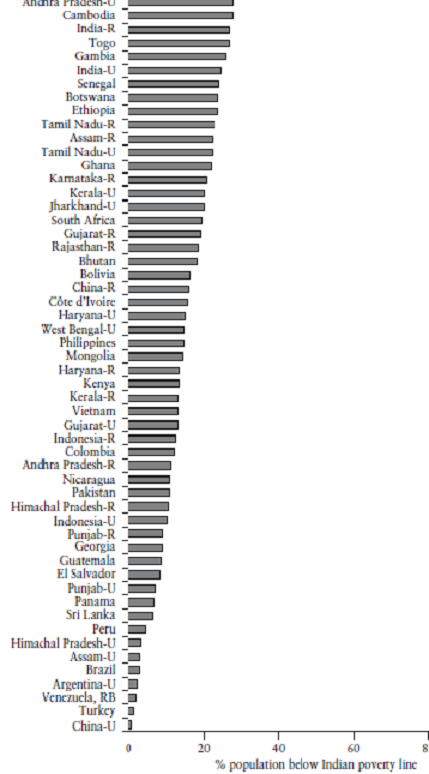Foxbat , great come on, you are feeding a troll. He is changing topic first innovation then coolie. That guy do not even know that Indian IT is not BPO driven. He never replied to my post, same thing does in other threads. He is just frustrated about Indias progress and wants to show Pakistan is better.
Mr. Riaz Haq will never answer when cornered.
He stated :
It's your home work to find out the number of jobs in each category rather than just the revenue.
BPO is the home of the ultra cheap cyber coolies while India's IT shops are just body shops supplying cheap code coolies for outsourced IT services rather than any real original sw products.
My Question :
So why is Pakistan IT Industry expecting the Indian IT Companies to help Pakistan in BPO and IT as per the following Article :
Relations with India
Half a million Indians working in Californias Silicon Valley have helped India's software companies grow and break into the US and world markets. The Indians on Wall Street have helped put their home countrys venture capital industry on a sound footing. By contrast, Pakistani industrialists and researchers, alike, have to prove they are not terrorists before they can enter America. Access to technology remains a distant cry.
A pact of peace and friendship with India will give us access to Bangalores technology.
I agree that Pakistan is better in Innovation, Richer in Economy, Higher in Per Capita Income, A Great Leader in the Field of IT etc. etc. but I cannot understand why Pakistan should ask all countries and now even India for Money, Investment and Help as per the following Article :
Neighbours peeve
The worlds most wanted man gets bumped off on their soil. Suicide bombings are the order of the day. Chaos and Pakistan seem like twin brothers. The bruising bond is getting deeper, worrying the world and neighbours like India. And it is bugging young Pakistanis, especially those in cities like Karachi and Lahore, no end.
Agreed, we face innumerable problems, but who doesnt? We know how to manage ourselves, says Ayub Sheikh, a 25-year-old software engineer in Lahore. There is a simmering anger among many young Pakistanis over how their country is being treated, especially at a time when they need support. And India, they say, is adding fuel to fire. Especially Indian politicians and the media. We are just like you. What makes you target us this way and project us in a negative way to the world? You are our big neighbour. There may be differences of opinion but we have always looked at you as a source of strength, fumes Duma Malik Gaul, a college student in Peshawar.
Many Pakistanis want to forget the Osama episode and move on. They want the international community, especially India, to not get too analytical over Pakistans internal affairs. We are an inward-looking society, and we understand ourselves best. Our own culture and mindset are unique and there are plenty of opportunities for motivated and positive people in our country, says Uzma Rasikh, a management consultant in Karachi.
On May 26, at the India-US homeland security meet in Delhi, Union Home Minister P. Chidambaram called Pakistan the global epicentre of terrorism and also said India was located in the most dangerous part of the world because of all that was happening in Pakistan. This news was published prominently worldwide. Dont terrorist attacks happen in India? We do agree its more on our side. What is important is finding a solution together, rather than the blame game, says Sheikh Rahman, a Pakistani settled in New York. According to him, such statements affect the image of his country. Its already taken a beating. No foreigner wants to visit our country.
There is a growing concern among the youth that Pakistan might go the Afghanistan and Iraq way, if the lawmakers and the army do not act wisely. But we have complete faith in Allah, and we are sure He will show us a way, says Hameed Khan, a banker in Lahore. India should help us to come out of this deadlock rather than accusing us. We need the support of an elder brother. We need money. We need investment.
Javed Abdullah, a school teacher in Multan, says there is no point competing with India. We cant reach anywhere near India. But we should be at least allowed to become the number two in the region, he says. His cousin and fiancee, Rajuba, who is settled in the US, says she has stopped watching Bollywood movies even though she loves them so very much. I dont feel like seeing or talking on anything to do with India, though I have a few close Indian friends who mean the world to me. You have projected us as a deadly country filled with terror and terrorists. Come to Karachi or Lahore, its no different from Delhi or Mumbai. The perception among Indians is that in Pakistan its all backwardness and orthodoxy clubbed with terror, she says.
"indianrabbit" I hope that Mr. Riaz Haq can convey to Mr. Hameed Khan, a banker in Lahore the reality of India i.e. Huge Foreign Debt, Lack of Foreign Exchange, No Foreign Investment, No Innovation, No Money, No Toilets etc. etc. and as such Mr. Khan should not consider India as an elder brother as well as beg for Indian support with Indian Money and Indian Investment.










